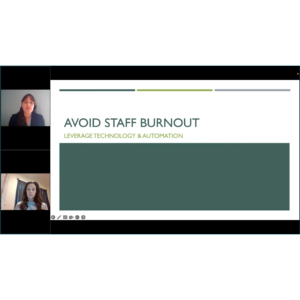Cutting-edge wound technology
Once upon a time being a long-term caregiver merely meant you had the time to write a letter, read a book, or just share experiences with a resident. But over the past 15 years, many regulatory changes have been implemented to enhance the quality of life for nursing home residents. Seldom did regulators take into account the reimbursement changes that these regulations necessitated or that the additional nursing time required to fulfill them created additional costs. How could these needed changes be accommodated most cost-efficiently?
F-tags 309 and 314, released on November 12, 2004, specifically address the quality of treatment and prevention of pressure ulcers.1 The focus on avoidable versus unavoidable treatment is paramount. While documentation has always been key, “If it isn’t documented, it isn’t done” is a mantra that took on a new meaning with the Centers for Medicare & Medicaid Services (CMS) updates. Proper identification and documentation were compressed from 24 hours to a range of two to six hours.
The new Stage 1 guideline stresses the need to differentiate tissue-to-tissue contact from friction and shear.2 Tissue loads in and out of bed, nutrition/hydration, diagnosis, pain, mobility, resident choice, advanced directives, resident resistance to care, and overall risk analysis for skin breakdown are all major concerns. All prevention and individuated care must be documented within those newly specified six hours of admission. As any caregiver in a skilled care facility would agree, new requirements could create huge pressures on the staff. The residents, on the other hand, should never feel as if they are a burden, nor should they have the impression that staff members are being rushed.
Arterial and Venous Wounds
Another focus of the CMS updates became the chronicity of a wound. One should never simply assume that a pressure ulcer is facility-acquired when it actually may be of vascular origin. Take time to stop, look at, and feel the affected area before classifying a wound—especially over the bony prominence below the knee—as a pressure ulcer.3 If the leg is cool, pale, hairless at the knee notch or great toe notch, and pulseless or with a fleeting pulse, the ulcer is most likely arterial. Hair growth indicates that the microvascular structure is viable. The wound generally is very painful and has a pale base, and the area looks as if it might have been perforated with a hole puncher. An arterial Doppler, done bedside, can identify the wound quickly. Many mobile x-ray companies can provide this service, which is Part B billable.
On the other hand, if the leg is distorted by swelling or looks as if it has a reddish-brown stain, the wound is most likely caused by a venous insufficiency. Venous wounds tend to be irregular and can occur many times all over the gaiter (calf) area of the leg. Edema and a tree-trunk appearance, in addition to the aforementioned signs, lead to a possible venous diagnosis.
Diabetes-Related Vascular Wounds
Residents with diabetes tend to have nondiscriminatory vascular insufficiency, with both venous and arterial issues. The resident typically has heavy yellow callousing around the rim of the ulcer. The wound tends to not be painful because of the neuropathy associated with diabetes. The wound bed is usually pale, and the resident runs a high risk of infection. Each type of wound takes a considerable amount of time to heal, and surgical intervention with an arterial issue may be required. Compression and calf-pumping action are key with the venous leg. Residents with diabetes require a total offloading of pressure on the wound.
Solutions
There is also a bright side to managing these CMS mandates. Advances in care have produced new ways to dress these types of wounds. Ionic silver is an excellent choice. At first, many administrators and nursing directors may be put off by the cost of silver dressings. At $8 to $14 for a sheet of ionic silver, the comparison of cost versus desired outcome with other (and older) methods is inevitable. A cost analysis done in 2005 of Silvadene, an older treatment method, versus a sheet of ionic silver took several factors—including salaries, nursing time, and cost of raw materials—into consideration beyond initial cost. The study discovered that the average cost for a traditional Silvadene dressing equated to about $235.76 a month whereas the ionic silver dressing cost about $142.52. It is important to remember that some of the new silver dressings can be reused up to seven days. Additionally, if the silver dressing falls off, it may be reapplied after being rinsed with sterile water. Incontinence alone can ruin several of the older types of dressings each day. Not only are the dressings wasted, but so, too, is nursing time—a direct financial impact for any facility.
A 2006 study done in the Pittsburgh market noted a savings of $93.24 per month per resident using ionic silver. Residents reported excellent pain relief at the wound site treated with ionic silver. Fifteen male residents ages 61 to 83 at a Pittsburgh-based VA skilled facility, all with vascular-insufficient ulcers and narcotic pain management, were observed using the Wong-Baker FACES Pain Rating Scale during and after dressing changes.4 This scale was chosen because five of the 15 study participants had significant dementia and two were aphasic. During a dressing change with either Silvadene or a collagen alginate, six elicited a 5 (actual crying), six elicited a 4 (significant grimacing), and three elicited a 3 (facial frowning/slight grimacing). After a dressing change, one elicited a 5, eleven elicited a 4, and three elicited a 3. All 15 residents had been medicated one hour before the dressing change and all fifteen had saline solution used to remove the dressing. Twelve of the 15 had to be re-medicated when it was time for a post-dressing change.
When the ionic silver dressing was removed, the same 15 residents were observed as follows: Zero scored a 5, zero scored a 4, four elicited a 3, eight elicited a 2 (a look of surprise), zero elicited a 1 (rapid eye movement), and three elicited a 0 (no pain). Four hours after the dressing change, the very same residents were observed for pain needs once again. Zero scored a 5, zero scored a 4, zero scored a 3, zero elicited a 2, two elicited a 1, and 13 elicited a 0. Only two residents needed to be re-medicated four hours post-dressing change.
It is interesting to note that five of the 15 who were verbally able to interact reported almost immediate pain relief at the wound site. Taking the additional time to medicate a resident costs money, but a citation for lack of effective pain management can cost even more. CMS is coming down hard and heavy on insufficient pain assessment and management.
Summary
Not only is ionic silver an excellent, cost-effective choice for the management of chronic wounds, but it also provides the unexpected benefit of pain control. There are various types of ionic silver, each differing in cost. Some have sustained released silver, some are impregnated with silver, and some are actually woven. Whichever type of silver dressing is chosen, considering total costs over time—not merely initial costs—can prove to be of great benefit to a nursing facility, enhancing not only its reputation for care, but its bottom line, as well.
For more information, phone (800) 579-9235 or visit https://www.xcelsupply.com. To send your comments to the authors and editors, please e-mail silvers0307@nursinghomesmagazine.com.
References
- Centers for Medicare & Medicaid Services. CMS Publication 100-7, State Operations Manual, (SOM), Transmittal 4. Revision of Guidance to Surveyors, Appendix PP, Tags F-309 and F-314. November 12, 2004.
- National Pressure Ulcer Advisory panel, https://www.npuap.org.
- Krasner DL, Rodeheaver GT, Sibbald RG, eds. Chronic Wound Care: A Clinical Source Book for Healthcare Professionals. 3rd ed. Wayne, Pa.:HMP Communications, 2001.
- Wong DL, Hockenberry-Eaton M, Wilson D, et.al. Whaley and Wong’s Essentials of Pediatric Nursing. St. Louis:Mosby, 2001:1301.
I Advance Senior Care is the industry-leading source for practical, in-depth, business-building, and resident care information for owners, executives, administrators, and directors of nursing at assisted living communities, skilled nursing facilities, post-acute facilities, and continuing care retirement communities. The I Advance Senior Care editorial team and industry experts provide market analysis, strategic direction, policy commentary, clinical best-practices, business management, and technology breakthroughs.
I Advance Senior Care is part of the Institute for the Advancement of Senior Care and published by Plain-English Health Care.
Related Articles
Topics: Articles , Clinical , Technology & IT











